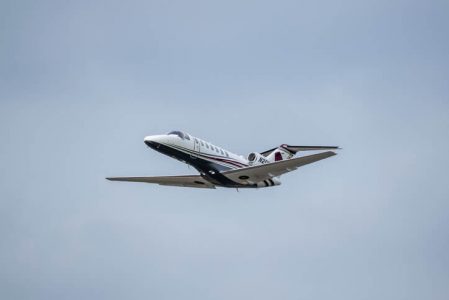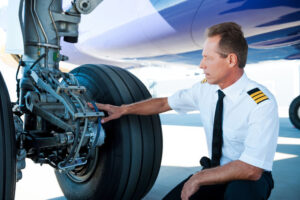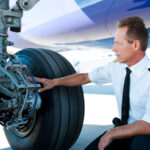Pilot Training with More Emphasis on Supply on Oxygen
The recent loss of a Cessna Citation 560 that broke into the restricted airspace of Washington, D.C. is heartbreaking, particularly if it was caused by inadequate management of onboard oxygen. Still unknown are what really happened after takeoff and why the pilot lost consciousness so promptly and at only a modest altitude. The rapid descending right spiral is equally mysterious.
No matter the cause of this accident, we want to note that it’s essential for pilots to check and test their oxygen masks rigorously before each flight and at critical altitudes to prevent system malfunctions. It’s also a critical measure for pilots to be mindful of turning on the oxygen before departure to avoid any lapses in judgment or memory.
Given the increasing frequency of these tragic occurrences, it is high time that oxygen management takes a more urgent priority in classrooms and simulators worldwide. This will equip pilots better to save young lives and avert senseless tragedies.
The Importance of Oxygen in Aviation
The importance of emphasizing oxygen application during pilot training cannot be overstated. For example, proper oxygen levels in aircraft systems are essential for safe and efficient operation. In emergency situations, the availability of oxygen masks can mean the difference between life and death for passengers and crew. And in cases where crew and passengers require supplemental oxygen, the timely availability of oxygen can prevent serious health complications.
Each airline and type of aircraft may have unique features that impact the operation of the oxygen system. Some airlines may use oxygen generators instead of compressed oxygen, which can be more cost-effective and reliable. Additionally, some aircraft may have higher cabin altitudes than others, which may necessitate higher concentrations of oxygen in the cabin. It is essential to consider these unique features when designing an oxygen system for a specific application.
In the event of an emergency, oxygen can be used to support passengers and crew who may experience difficulty breathing due to altitude changes or cabin depressurization. Supplemental oxygen masks are provided in the cabin of most commercial aircraft and can be deployed in case of an emergency.
Pilots and crew may require supplemental oxygen during flight if they experience hypoxia or altitude sickness, which can cause dizziness, confusion, and other symptoms. Similarly, passengers may also require supplemental oxygen if they have pre-existing medical conditions that affect their breathing.
Physical Impact of Lack of Oxygen
Research has shown that exposure to high altitudes and low oxygen levels can have a significant impact on the body and mind. The lack of proper oxygen supply during flights can result in a range of physical, cognitive, psychological, and emotional effects, including hypoxia, altitude sickness, cognitive impairment, and psychological distress. In worst-case scenarios, oxygen supply can mean the difference between life and death for passengers and crew.
To ensure proper oxygen supply during flights, airlines must follow strict safety regulations and maintain their oxygen systems regularly. This includes providing supplemental oxygen masks in the passenger cabin, ensuring the proper functioning of the oxygen delivery system, and conducting regular safety drills to prepare crew members for emergency situations.
- Hypoxia: Hypoxia occurs when the body does not receive enough oxygen, which can lead to physical symptoms such as dizziness, confusion, and shortness of breath.
- Altitude sickness: Altitude sickness can occur when the body is exposed to high altitudes, resulting in physical symptoms such as headaches, nausea, and fatigue.
- Cognitive impairment: Lack of oxygen can cause cognitive impairment, including impaired decision-making, memory loss, and reduced cognitive function.
- Psychological and emotional effects: Lack of oxygen can also cause psychological and emotional effects, including anxiety, fear, and panic.
- Loss of consciousness: In severe cases, a lack of oxygen can lead to loss of consciousness, which can be life-threatening in an aviation setting.
- Worst-case scenarios: In some worst-case scenarios, the lack of proper oxygen supply on an airplane can result in an emergency situation, leading to injuries or fatalities. For example, if there is a sudden depressurization of the cabin, passengers and crew may require immediate access to supplemental oxygen to prevent hypoxia and other complications.
The Cessna Flight
The story of the Cessna accident begins after ATC lost contact with the pilot only 15 minutes after takeoff in Tennessee. The loss of communication raises questions about the plane’s pressurization system, and if there was a problem, why weren’t any alarms sounded? Although planes don’t climb as fast as rockets, the pilot should still have had enough time to respond and land safely. A quick loss of consciousness at a relatively low altitude seems unusual.
What’s even more puzzling is that fighter pilots who were scrambled when the aircraft entered restricted space around Washington D.C. saw the pilot slumped over the controls. The flight’s behavior also raises eyebrows, as it took a 180-degree turn after reaching its destination and maintained that heading while crossing restricted airspace. The plane then entered a rapid descending right spiral, reaching an average descent rate of over 28,000 feet per minute – an unbelievable rate.
Although investigating wreckage is difficult, it’s important to determine if pilot error was a factor in this tragedy. If this accident highlights the importance of oxygen management in flight training classrooms and simulators, we can prevent senseless loss of life.
Conclusion
Oxygen plays a critical role in aviation safety, from facilitating aircraft systems to ensuring the health and safety of passengers and crew. Proper oxygen application and system design are essential for achieving safe and efficient flight operations The potential incidents that could occur due to a lack of oxygen supply are significant, and airlines must take all necessary precautions to ensure that their oxygen systems are functioning correctly and readily available in case of an emergency.










